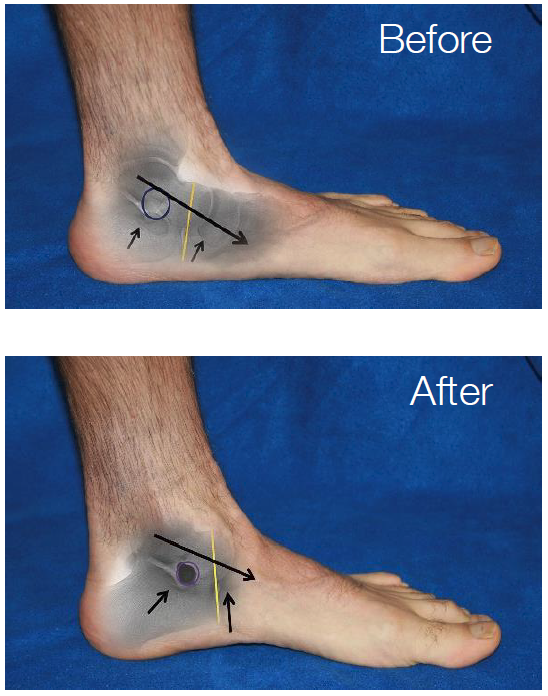There are more than a million new cases every year from people suffering with chronic heel pain. It is estimated that we spend over $300 million dollars to treat it.
Heel pain in adults is different from children. It typically occurs in people who are early middle age and older. This type of pain generally begins slowly and continues to get worse. Initially it feels like a bruise until, little by little, it develops into sharp stabbing pain. There are many causes of heel pain, but the most common form is pain that occurs to the inner heel upon standing from a sitting or laying position. The pain is intense for several
minutes or longer, depending on the severity, and gradually eases.
Unfortunately, this heel pain condition starts in one heel and sooner than later is experienced in both heels. People who suffer with this type of heel pain can’t recall anything specific they did that caused it to happen. They didn’t stumble and land hard on their heel, or cause trauma.
The first place most people search for medical advice is the internet. Do an internet search for heel pain and the first listings are for a condition call plantar fasciitis ( plan∙tar fa∙she∙eye∙tis ). There are numerous websites and multiple opinions on what the best form of treatment is that one should take.
Common Symptoms that lead to a diagnosis of Plantar Fasciitis*
- Sharp stabbing pain to the inner heel
- Occurs when getting out of bed in the morning
- Occurs when first standing after sitting
for a while, especially in chronic cases - Pain that eases after several minutes of standing or walking
- No association with sudden trauma. It just started out of nowhere.
What causes plantar fasciitis?
You might have a misaligned hindfoot.
- This happens because the ankle bone is partially dislocating/displacing on the heel bone.
- The partially dislocating ankle bone unlocks the joints of the midfoot longer than they should be.
- This increases the strain on the soft tissues supporting the inner arch.
- Eventually, if the tissues and bones, aren’t able to compensate for the excessive motion, the tissues will become damaged and cause pain.
Why you should care!

What treatment makes the most sense for me?
The best way to get results is to fix the underlying problem.
Unfortunately, the majority of treatments offered to patients, only address the symptoms, not the underlying cause.
Many “treatments” are designed to solve an inflammation problem, but we’ve learned that inflammation is not the cause of heel pain. That’s why this condition has been such a challenge for most medical professionals.
What’s typically suggested as a treatment option:
- Rest Ice therapy
- Massage
- Nonsteroidal anti inflammatory drugs
- Night splints
- Adhesive taping
- Heel cups/pads
- Custom and off the shelf arch supports
- Casts
- Stretching
- Injections
- Extracorporeal shock wave
- Low level laser therapy
- Needling
- Cyrosurgery
- Injection of amniotic tissue
- Ultrasound Guided Radiofrequency denervation of the medial calcaneal nerve
- Open or minimally invasive cutting of the plantar fascia
- Cutting and shifting the heel bone yikes!
The good news is there’s another treatment option.
You can correct your foot misalignment – and the secondary conditions it causes – with HyProCure®, a small titanium stent that is placed in the naturally occurring space between the ankle bone and heel bone to stabilize the ankle keep your ankle bone from sliding forward and off your heel bone and the rest of your body in its natural alignment. Not only is HyProCure® a permanent and effective solution, it can also significantly reduce the negative effects that misaligned feet cause to the rest of your body. Don’t just fix the symptoms, solve the problem!



